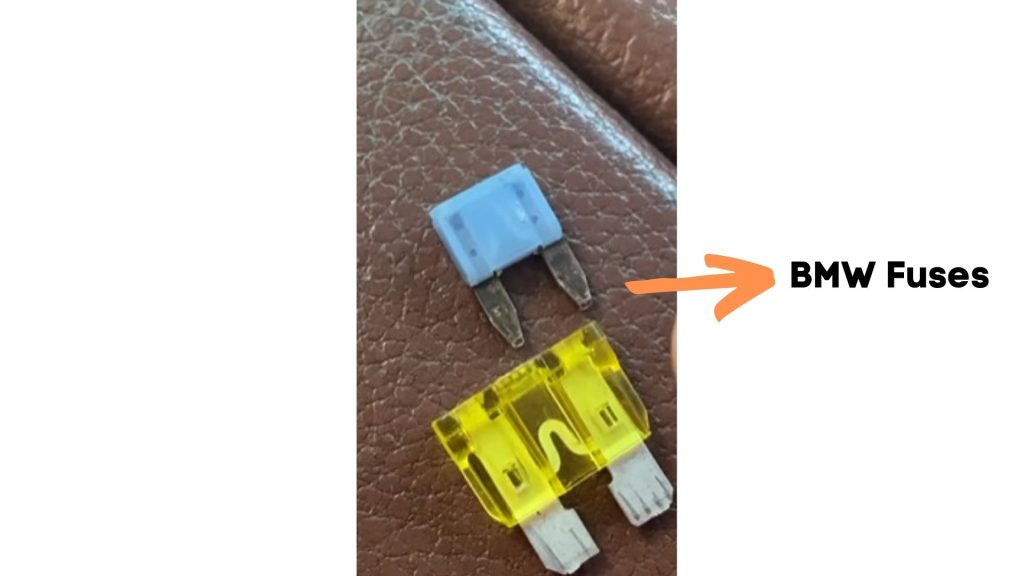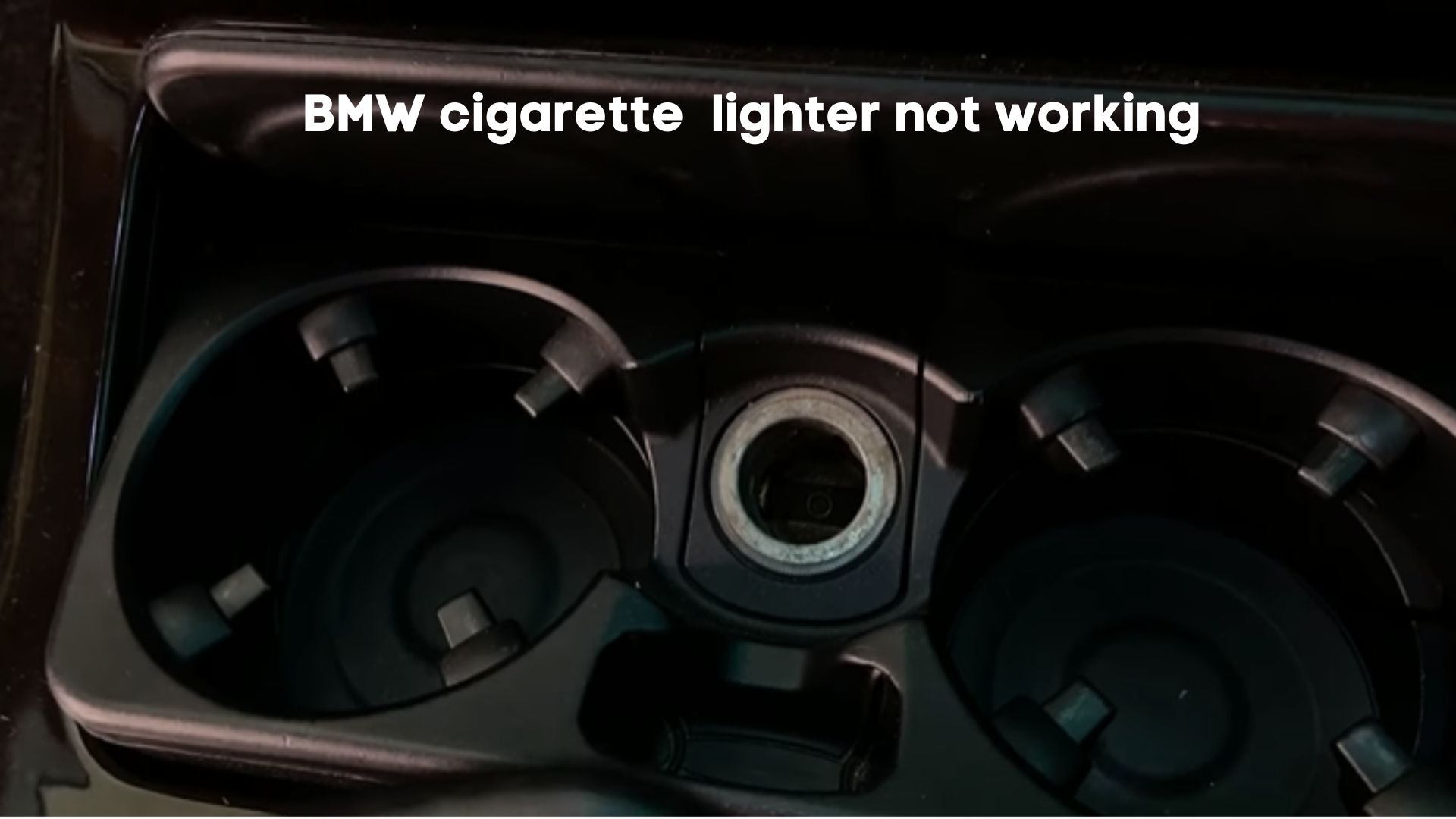The cigarette lighter in your BMW is a 12V socket that supports numerous 12V DC accessories. One or more of the following factors may explain the socket’s malfunction:
1). The Fuse Blew

This is the most common culprit. George Austers has a video diagnosing this issue. He accessed the fuse box and identified the faulty fuse preventing his cigarette lighter from working. He also made an interesting observation. Some BMWs have multiple cigarette lighters.
But you can’t use them all simultaneously. Doing so will blow one or more fuses. This sounds like a mistake, but it’s actually a deliberate attempt on BMW’s part to prevent consumers from overwhelming the car’s electrical system.
E90post has a forum that shows a fuse layout in a BMW. But you can find a similar diagram if you search your car. You can’t rely on the diagrams other drivers post online because they may not apply to your model.
A fuse layout allows you to identify the fuse associated with the defective socket. These diagrams are particularly useful if you have multiple fuses and only one of them has failed. In George Austers’ video, only one cigarette lighter had failed. This made finding the problematic fuse more difficult.
But even if you identify the dead fuse, it isn’t enough to replace it. Find out why the fuse blew. Otherwise, the new fuse will also blow.
2). The Accessory Is Dead
Are you sure the cigarette lighter is the problem? Maybe your accessory is at fault. Are you trying to charge your phone? Check the phone charger’s power cord. Look at the contacts. Try a different socket or phone charger.
Don’t blame the 12V socket until you rule out the accessory. Car accessories fail all the time because people mishandle them.
3). The Cigarette Lighter Has Debris
Check the socket for debris. Foreign objects can interfere with the socket’s functions by blocking the contacts. It only takes a few breadcrumbs to interrupt the socket’s work. Fortunately, these foreign objects are easy to spot. Get a torch and shine a light into the socket.
4). The Socket Is Damaged
You can damage dirty 12V sockets if you use them without removing the debris. Eventually, the contact points will bend or break. If you already ruled out foreign objects, what about corrosion? Moisture can attract rust.
Some drivers destroy the contact points while removing the rust. Others will break bent contact points while attempting to bend them back into the proper shape and position.
5). The Engine Is Off
Unless the manual says otherwise, 12V sockets will only work when you turn the ignition on. This prevents the socket from draining the battery. But many drivers don’t know this.
They think the cigarette lighter is always active, which creates confusion. A cigarette lighter can only remain active when the ignition is off if someone hardwires the socket to the battery. Otherwise, confirm that you turned the ignition on before you hire a mechanic to fix a socket that won’t work.
6). The Wiring Is Loose
The cigarette lighter uses the current from the BMW’s electrical system to run your 12V accessories. Therefore, it can’t work without solid connections. But identifying loose connections and frayed wires is easier said than done because it means removing the dashboard.
Once you remove the dashboard, look for dirt and debris on the contacts, not to mention scorch marks and a burning smell.
How Do I Get My BMW Cigarette Lighter To Work?
A layperson should hire a mechanic. But if you trust your skills, you can make an attempt at troubleshooting and resolving this issue:
1). Start By Testing The Socket
This means buying a multimeter (if you don’t have one) and turning the ignition to the on position:
- Use the DC voltage setting on the multimeter.
- Connect the red wire to the V socket and the black wire to the COM socket.
- Attach the multimeter’s red probe to the circle at the bottom of the socket.
- Attach the black probe to the cigarette lighter’s side.
- Check the display. Readings below 12V are bad. Get Jerry thinks you should replace the socket.
Even if you have the technical know-how to test the cigarette lighter, you need a mechanic to replace the socket. Don’t remove the interior panels unless you’re confident in your ability to reliably uninstall and reinstall the socket.
2). Repair The Fuse
Find the fuse box. The manual will tell you where to look. It will also show you the fuse layout. Use the diagram to identify the defective fuse. Some fuses are simply bad. Others can blow because you connected an incompatible device.
Again, you should check the manual for guidance on this issue. A manual will show you the accessories to avoid. You can also contact the manufacturer’s personnel to acquire a comprehensive list of all the devices you can use.
If the fault lies elsewhere, consult a mechanic, especially if you suspect a surge or a defect in the wiring. Fuses are not that hard to find. You can buy dozens for a few dollars. Therefore, it won’t take you long to replace a bad fuse.
3). Clean The Socket
A visual inspection will show you the foreign objects hiding in the socket. But how do you clean the socket? You have several options at your disposal:
- Shoving your fingers into the socket isn’t an option. They won’t fit. You need tweezers, toothpicks, and any other object small enough to reach the bottom of the socket. Apply caution. Remove the foreign objects without damaging the contact points.
- Baking soda sounds like overkill, but it can remove dirt and grime. You start by sprinkling the baking soda into the socket and then wiping it away with a cloth you dipped in white vinegar. Baking soda is appealing because it isn’t particularly abrasive. It won’t harm the socket. Don’t forget to dry the socket with a damp cloth.
- Brush the socket with a Q-tip, but only after adding a few drops of rubbing alcohol.
- You can’t go wrong with a vacuum. It will clean inside and around the socket without causing additional harm.
4). Tighten The Prongs
Perform another visual inspection to determine whether the prongs and contact points are loose or bent. You can bend them back into place once you find a tool that can grip them. Use this tactic if your phone charger feels a little too loose whenever you plug it in.
5). Replace Damaged Accessories.
Plug them into a different socket in the same car or a new one in another vehicle. If the accessories refuse to work, they are most likely dead. You can confirm this theory by finding an accessory, such as a phone charger, that works in another car and connecting it to the defective socket in your BWM.
If the phone charger works, your accessories are the problem. They have failed, and you should replace them. The cigarette lighter is fine.
6). Check For Loose Connections
Ask a technician to check the electrical system for loose connections. Loose connections behind the dashboard can affect the vehicle’s instruments. Therefore, you should find and tighten them before the problem spreads.
Cost To Repair It
It depends on what you need to repair. You can clean the 12V socket without spending any money. But if the socket is dead, a new one may cost you hundreds of dollars. You will spend even more money if you hire a mechanic to search for loose connections because they charge by the hour.

